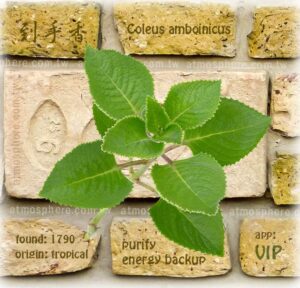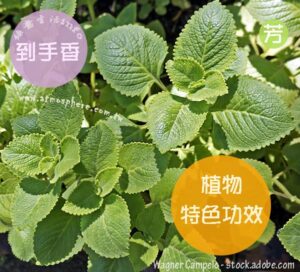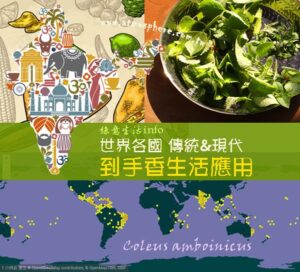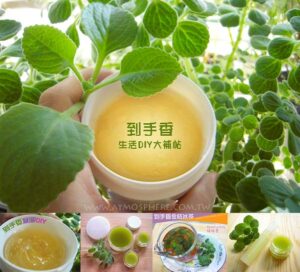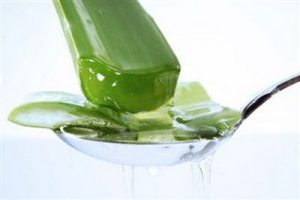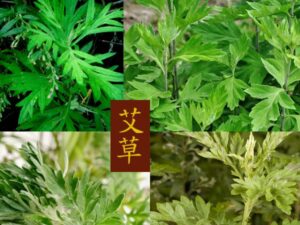Your cart is currently empty!
SHARE | Facebook fans page LIKE 
綠意生活 Green Life info ★ 實用生活資訊 Update: 2021/12/07
Completely Study【Coleus amboinicus | Cuban Oregano】and get back the right hand from its name issue
PART 1 - What you should know about this herb
PART 2 - The compostion
PART 3 - features , properties , safety notice
PART 4 - traditional folk common uses
PART 5 - various DIY ideas
?? This article uses auto translate to English, so it’s not so fluent. We will make a correction soon. Thanks for your reading ??
Coleus amboinicus's mainly use part is its thick and juicy leaves. Its essential oil content is not too much. About 1 kg of plants can distill 1-2g of essential oils. Peppermint is about three times the essential oil content of hand scent. The characteristics of Coleus amboinicus essential oils are similar to those of Oregon. They are both powerful essential oils (a small amount/interval/compound/use at discretion). Both have significant antibacterial and purifying effects. The soothing and balanced herbal fragrance is obvious and smells good. During the epidemic prevention period, it is a good helper for fresh air, incense, mosquito prevention, environment and personal hygiene.The important ingredients of Coleus amboinicus:terpenes. Phenolic compounds (carvacrol, thymol). Organic acid (phenolic acid). Flavonoids. Squalene. Caryophyllene
● Essential oils – * in the next few months .Terpene compounds – phenols>50% (volatile secondary metabolites / strong fragrance / irritating skin and mucous membranes)
carvacrol(anti-oxidant, antibacterial, anti-inflammatory. the key component of Coleus amboinicus)、
thymol(fragrance、antiseptic、antibacterial )
γ-terpinene( herbal citrus scent. Food fragrance formulation, anti-oxidation, anti-inflammatory )
p- Cymene( Warmth, active circulation, analgesia, anti-anxiety, anti-oxidation, anti-bacterial, anti-inflammatory )
Camphor ( generally low in all countries in the world *Taiwan 0.3%]. Regions with high content [18-39%]: African countries Comoros, Mauritius, Malaysia)
● Nutrition – * in the next few months .Protein, plant sterols, phytic acid, flavonoids, xanthophylls,
。。。。。 。。. Mineral trace elements (iron, zinc, calcium, magnesium), vitamin C, vitamin B1,
No good to eat too much:saponins/saponins, oxalate (Reference article → how to avoid oxalic acid problems)
Whole composition of Coleus amboinicus
Coleus amboinicus is known to contain * 76 kinds of volatile substances - and - 30 kinds of non-volatile substances .
The following is a collection of composition data found in multiple research theses for reference only. The composition of Coleus amboinicus will vary depending on the planting area, soil, season and other conditions. There are many chemical systems in the world. Some areas do not contain certain ingredients or the content is much different. For example, camphor is grown in some places, but some does not. Thymol thymol is very low in some places.
● – Food Nutrition
★ – secondary metabolite(pharmacological effect)
√ – Beauty skin care cleaning
◆ – anti-nutritional factors* ( Digestion, absorption and utilization of nutrients can adversely be affected by those materials. Their active effect can be reduced by heating )
| ●√ Protein | 0.6% 9 kinds of essential amino acids (7 kinds) account for about 30%. Non-essential amino acids account for about 70%. The content of aspartic acid, glutamic acid and glycine is more. |
| ● ★ √ Vitamins | Vitamin D (4 ppm), Vitamin E (3 ppm), Vitamin C (0.003%), Vitamin B complex (B1 0.00008%, B3, B12), Vitamin A (0.38 ppm) |
| ● √ Minerals | Calcium 0.158%, Phosphorus 0.016%, Potassium 0.138% Sodium 0.0047%, Magnesium 0.088% |
| ● √ Trace elements | Iron 0.262%, zinc 0.0003%, copper 0.00012%, chromium 0.000022% |
| ● Carbohydrates (sugars) | Soluble dietary fiber 0.31% Insoluble dietary fiber 1.56% ★ √ Polyuronic acid glycosides (pectins, mucilages, gums), |
| ● ◆ √ phytic acid | 0.00092% (chelating and metal elements. Antioxidant. Anti-inflammatory, enhance immune activity) |
| ★ √ phytochemicals secondary metabolites | ● √ Flavonoids 0.3-0.95 mg/g Whole plant [Chrysoeriol, Cirsimaritin, Rutin/Rutin, Salvigenin, Thymoquinone] Stem [ Luteolin, Quercetin, Eriodictyol ] ● √ α-carotene 0.157mg/g dry weight, ● √ β-carotene 0.0035mg/g dry weight ● Zeaxanthin、 ● neoxanthin、 ● violet zeaxanthin、 ● √ catechol、 ◆ saponins, cardiac glycosides 0.11-2.4 mg / g, onions quinones mg 0.14-0.94 / g ◆ alkaloids * important component of grass medicine, mainly analgesic or anesthetic effect. Most alkaloids are toxic to the human body, but some can be used as medicine. ● √ Phytol(regulate blood lipids, anti-cancer, anti-inflammatory, anti-viral) ● √ stigmasterol 、campesterol . ● ★√ steroid glycosides. ● ★√ γ-sitosterol . |
| ★ ◆ √ organic acid main component of hydrosol | Gallic acid, rosmarinic acid, caffeic acid, salvianolic acid, Shimobashiric acid √ p-coumaric acid (antioxidant/inflammation、inhibition of melanin、whitening) tannic acid 0.015% | 0.88-2.62 mg /g, oxalate ( ● soluble oxalate 0.02%, insoluble oxalate 0.03% / skin and mucous membrane irritation) |
| Essential oil | essential oil ratio in plant 0.1-0.15% antibacterial, antioxidant, good smell of fresh and dry neutral scent stronger types of essential oils, skin irritation ★ phenolic compounds phenols 0.75-3.82 mg/g Essential oil main components / Around the world different typical composition examples: The content of the production composition varies from place to place, or does not contain certain ingredients. There are also differences in freshness or dryness. carvacrol (10-88%)、thymol ( 0.1-42%)、p-cymene (3-19%)、 γ-terpinene (3-13%)、β-caryophyllene (2-12%)、 1,8-cineole、eugenol、methyl eugenol、patchoulane、 undecanal ( 0-14%)、humulene (1-3%)、 camphor ( 0-23% )、δ-3-carene、linalool、 nerol acetate、geranyl acetate |
| 其它成份 | Phenylpropanes, ● √ Oleic acid 、 ● √ Squalene、 chavicol、 Benzoic acid 、Octadecanoic acid Dihydro carveol (flavor), ethyl salicylate ethyl Salicylate (like Holly Scent), methyl octanoate (food flavor), myristaldehyde Tetradecanal (food flavor), ● √ Phytol(regulate blood lipids, anti-cancer, anti-inflammatory, anti-viral) ● √ stigmasterol 、campesterol . ● ★√ steroid glycosides. ● ★√ γ-sitosterol . thymol acetate、undecanal undecanal (flavor) Isocholesteryl methyl ether(IME)、 Octadecanoic acid (OA) |
Essential oil chemical molecules of Coleus amboinicus
The content of the production composition varies from place to place, or does not contain certain ingredients. There are also differences in freshness or dryness.
| 氧化單萜烯類 >50% Oxygenated monoterpenes | Camphor 、 Carvacrol 、 Carvone 、 1,8-Cineole 、 Eugenol 、 Geraniol 、 Linalool 、 Methyl carvacrol 、 Methyl eugenol 、 α-Terpineol 、 Terpinen-4-ol、Thymol 、 Thymol methyl ether |
| 單萜類碳氫化合物 >20% Monoterpene hydrocarbons | δ-3-Carene、p-Cymene 、 Limonene 、 β-Myrcene 、 Ocimene 、 α-Phellandrene 、 β-Phellandrene 、 α-Pinene 、 β-Pinene 、 Sabinene 、 α-Terpinene 、 γ-Terpinene 、 α-Terpinolene 、 α-Thujen |
| 倍半萜碳氫類 >10% Sesquiterpene hydrocarbons | α-Amorphene、Aromadendrene 、 trans-α-Bergamotene 、 trans-β-Bergamotene 、 γ-Cadinene 、 δ-Cadinene 、 α-Calacorene 、 cis-Calamenene 、 β-Caryophyllene . γ-Caryophyllene 、 α-Copaene 、 α-Cubebene 、 (E,Z)-α-Farnesene 、 Germacrene D 、 γ-Gurjunene 、 Humulene、α-Muurolene 、 Patchoulene 、 β-Selinene 、 β-Sesquiphellandrene |
| 類含氧化合物 Oxygenated sesquiterpenes | Caryophyllene oxide 、 β-Cedrene epoxide 、 β-Copaen-4-α-ol 、 1-Epi-cubenol 、 β-Eudesmol 、 β-Himachalene oxide 、 Humulene oxide 、 Spathulenol |
| Others – 萜烯類 Terpenes – 苯基丙烷類 phenylpropanoids – 酯類 esters – 醇類 alcohols – 醛類 aldehyde – 脂肪酸 fatty acids | 1,2-Benzenediol 4-(1,1 dimethylethyl) 、 Chavicol 、 Methyl chavicol 、 α-Corocalene 、 Dihydro carveol 、 Durohydroquinone 、 1,4 Eicosadiene 、 Ethyl Salicylate 、 (Z)-1,3-Hexadiene 、 (Z)-3-Hexen-1-ol 、 Methyl octanoate 、 1-Octen-3-ol 、 Oleic acid 、 2-Phenyl ethyl tiglate Phytol 、 Squalene 、 Tetradecanal 、 3,7,11,15–Tetramethyl-2-hexadecen-1-ol 、 Thymol acetate 、 Trans-sabinene hydrate 、 Undecanal |
References for the composition of the essential oils grown in different countries
●→ RESEARCH 1 :Taiwan in 2019
carvacrol (50.0%)、γ-terpinene (13.1%)、β-caryophyllene (11.3%)、p-cymene (7.8%)、 α- caryophyllene (3.5%)、myrcene(1.1%)、thymol (0.4%) 、camphor (0.3%)
●→ RESEARCH 2 : India 2010
carvacrol (28.65%)、thymol (21.66%)、α-humulene (9.67%)、undecanal (8.29%)、 γ-terpinene (7.76%)、p-cymene (6.46%)、caryophyllene oxide (5.85%)、α-terpineol (3.28%)、β-selinene (2.01%)
●→ RESEARCH 3: Brazil 2017
thymol (41.3%)、carvacrol (13.25%)、1,8-cineole (5.45%)、eugenol (4.40%)、caryophyllene (4.20%)、terpinolene (3.75%)、 α-pinene (3.20%)、β-pinene (2.50%)、methyl eugenol (2.10%)、β-phellandrene (1.90%)
●→ RESEARCH 4: Africa Comoros, Comoros Islands 2013/ Dry leaf distillation
Carvacrol (23.0 %)、 thyme camphor / camphor (22.2 %)、 Δ-3-carene (15.0 %)、λ-terpinene (8.4 %)、O-cymene (7.7 %)、α-terpinene (4.8 %)
Mystery of Coleus amboinicus
It's not easy to find this essential oil, Why?
It is really hard to find the essential oils of Coleus amboinicus. They are rarely sold on the market. The original juice, hydrosol, powder and dried leaves are relatively easy to buy. So if you want to use Coleus amboinicus essential oils but cannot buy them, you can also use Oregon/Oregano/Wild Marjoram essential oils instead.
There is a hidden rule of "the secret that the essential oil and fragrance industry cannot tell", Not really secret. I think maybe they just don't want people to know this , and won't deliberately emphasize it. There are some commonly used essential oil types on the market that are alternatively mixed. It is very likely that most of Coleus amboinicus are actually sold or used as raw materials under the name Oregon, such as some non-aromatherapy grade essential oils, perfumes, fragrances and so on.
The general consumer usually uses the fragrance to identify it. It is found that Coleus amboinicus are similar to Oregon's essential oil scents, and they are easy to cultivate and can create higher economic value. According to a research survey, Oregon, which is loved by Europeans and Americans, has very commercial value. It can be regarded as a very important herb among other EO plants.There are more than 60 plants of the same genus or similar scent under the name of Oregon. The raw material,Coleus amboinicus is one of them.Just like lavender, sage, sandalwood and rose, there are many alternative plants. It is a bit like the original factory vs. subsidiary factory parts / well-known brand medicine vs. the same ingredients but the brand less well-known concept.
(O.S)
?? No wonder I can't find Coleus amboinicus essential oils easily in aromatherapy shops, but there are so many researches study on its essential oils, that means it should not be difficult to distill essential oils and the amount of essential oil itself is not as small as lemon balm. , So obviously...Coleus amboinicus all turned out to be used as a stand-in ><". That's really not fair !! ?
If it's only used for flavoring, it's okay. If it's used for medicine and aromatherapy, it must be more precise. Each plant is unique, with different composition and secondary metabolic compounds, and more subtle energy Temperament cannot be completely replaced. Even standardized essential oils cannot fully function as natural essential oils, because there are many complex factors of secondary metabolites.
I find there are currently only sell essential oils that several small farmers ─ Taiwan brand:●→小村遠遠.●→ unique essential oils in Taitung(minerva腳印台東)(posts reference)。 It may be because of the COVID-19 epidemic that the aromatherapy industry vigorously promotes Oregano essential oils. Young Living, a direct seller in the United States, launched *●→Ecuadorian Oregano essential oilin 2020. In fact, it is Coleus amboinicus. In Philippines and Spain, many people are also accustomed to directly refer Coleus amboinicus as Oregon. In addition, there is a Malaysian GMP herb/fragrance brand BF1 that sells hand fragrance essential oils under the name *●→Mexican Mint* in the next few months .
Coleus amboinicus is not included in the list of essential oils in regular aromatherapy. It is more in the field of herbal medicine, and is advocated that the complete plant itself has more useful value. Although there is only a tiny amount of less than 0.2% essential oil in the leaf juice of Coleus amboinicus, it is mainly strong phenols that will irritate the skin, so the external application should be very small amount and do not constantly use it for too long period. Unless necessary, it is not recommended to use it as a beauty mask. Just add it to moisturizing lotion gel cream for rubbing or washing it is very suitable. If you want to drink or eat, you must be careful not to overdo it. Drinking a cup of tea or iced fruit juice occasionally, as a seasoning, should be OK. Pregnant women, menstrual periods, infants, and people with weak physique are best not to eat it.
| AUTHOR: Jessie / 桂花白文 ( NAHA/IFA aromatherapist ) |
🌻🐥Nice eBook【100 Super Healthy Sweet Treats & Dissert Recipes】 | Cleverly use vegetables and raw materials to make no-bake and no-cook healthy nutritious pastries, cookies, snacks, ice cream, weight management meals. Taking into account nutrition and taste. Most are sugar-free, low-calorie, ketogenic diet, gluten-free. 😊🌲→ Click this link can have more exclusive free bonus ebooks
Facebook fans page LIKE  NEWSLETTER | SHOPPING | DONATE US NEWSLETTER | SHOPPING | DONATE US Any support or friendly feed back are appreciated ,THANK YOU! |
Completely Study【Coleus amboinicus | Cuban Oregano】and get back the right hand from its name issue
PART 1 - What you should know about this herb
PART 2 - The compostion
PART 3 - features , properties , safety notice
PART 4 - traditional folk common uses
PART 5 - various DIY ideas



